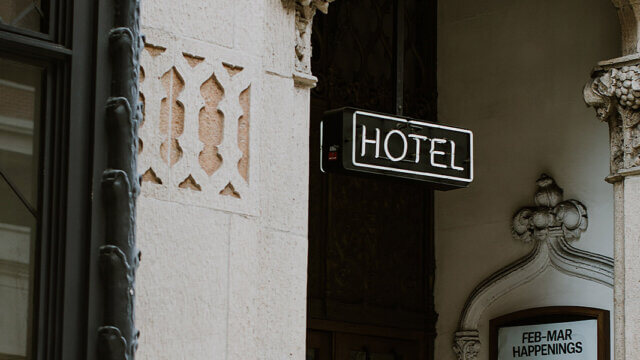The past two years have been anything but formulaic for the hospitality industry and the crisis in Ukraine could keep it that way. Hotels, at the mercy of the pandemic, have been bounced to and fro like a boat in the middle of a sea storm. Calmer waters may soon prevail, but data points to a recovery that is anything but gangbuster, according to HotStats.
Europe alarm
In a worrisome sign, Europe profit in January fell into negative territory for the first time since April 2021, according to data from HotStats. After plateauing at $51.99 (47.61 euros) in October 2021, GOPPAR has fallen for the three months after, hitting -$5.55 (-5.08 euros) in January, 119% lower than January 2019. The good news is that January is typically the poorest performing month for hotels on a seasonality basis, but the turn into the red is concerning.
All top-line indicators dropped, leading to total revenue of $71.39, (65.37 euros) which was $61.12 (56 euros) lower than at the same period in 2019. The drop in revenue was met by an uneven expense flow. Labor, still a thorn in the side of hoteliers, remains rather muted on a cost basis. At $39.13, (35.85 euros) total payroll on a per-available-room basis is $24.01 (22 euros) higher than it was at its nadir in April 2020. It remains around $16.37 (15 euros) lower than its normal traditional level.
Concurrent with the lower labor cost was a surge in utility expense. Utilities have risen to their highest level since 2018 and in January hit $8.03 (7.36 euros) on a PAR basis, nearly $2.18 (2 euros) higher than in January 2019. The largest cost, electric, is now three times higher on a PAR basis than in January 2019.
U.S. establishes normalcy
Unlike Europe, the U.S. remained in positive GOPPAR territory, albeit substantially down in January from the previous month, but more a sign of seasonality than anything else. At $23.65, it was down $37 from December 2021 and still around three times less than in January 2019.
Most metrics moved in tandem with the seasonal dip. The decline in TRevPAR was a bit steeper than the drop in RevPAR, the result of a pull-back in ancillary spend. In regard to labor, payroll costs are up 166% since April 2020 and at $60.91 in January were $6 lower than December. Labor cost remains well off 2019 levels, down some $33 on a PAR basis.
Middle East honeymoon over?
The Middle East came back down to Earth in January after a monster December, which saw GOPPAR hit its highest level since March 2018. Much of the region’s success is credited to Expo 2020, which runs through the end of March. Middle East GOPPAR was recorded at $60.75 in January, which was $38 less than in December, but only $7 off January 2019.
In Dubai, host to Expo 2020, GOPPAR remained high but lower than October through December (Expo 2020 began in October), but at $140, was $15 higher than in January 2019.
Like other regions, labor costs in the Middle East remain muted against pre-pandemic years, hitting $43 in January, $10 lower than in January 2019.
China erratic
The recovery in China and across most of Asia has been choppy. GOPPAR in China in January was down to $8.54, which was lower than May 2020, which was around five months into the pandemic.
In fact, the recovery in China has been erratic. After GOPPAR hit $44 in October 2020, which was on par with 2019 levels, performance swooned, and by February 2021, hotels in the country were just breaking even. By May, profit was back up to 2019 levels, but a summer surge in COVID cases squashed the momentum and by August GOPPAR was back to a breaking-even scenario. It’s been up and down since, more down recently.
Labor costs in China were at their lowest in March 2020 and by October had surged to $34 on a PAR basis, around the same as pre-pandemic levels. Since then, payroll has been relatively static, recorded at $32 in January 2022.
Meanwhile, occupancy in the country was down to 37% in January, around 28 percentage points lower than its post-pandemic high in July 2021, when occupancy hit 65%. Though a drastic shift, it could be more a function of seasonality combined with the ongoing irritant of case counts. China, more so than other countries, has instituted draconian measures to stem the COVID scourge. In recent times, however, it appears the country is moving away from its “zero COVID” strategy, which could be a boost for its hospitality industry.

